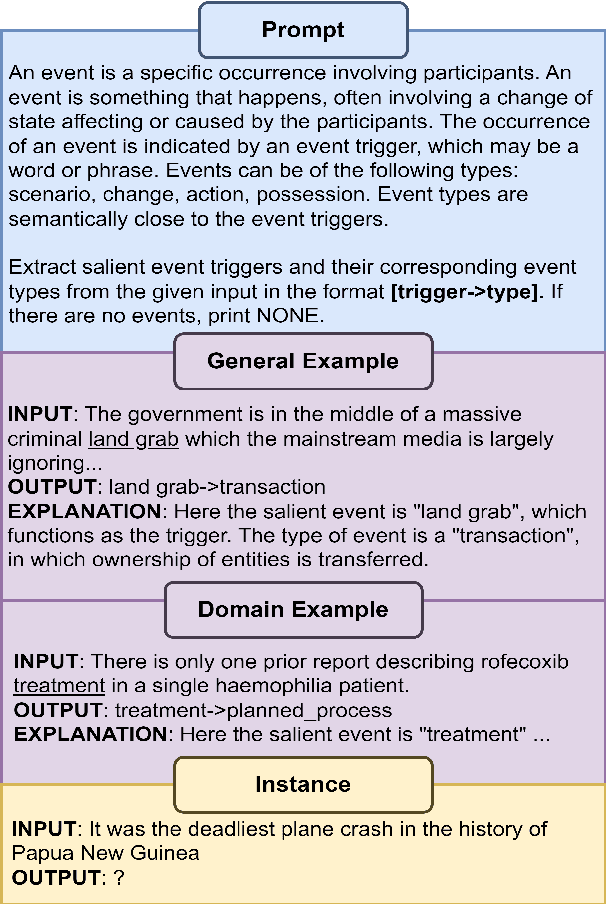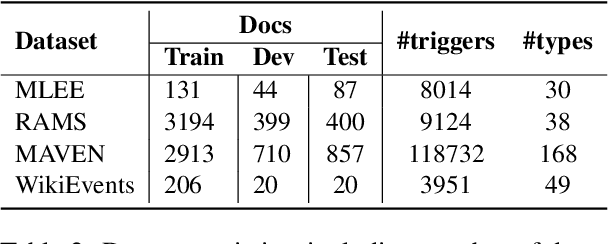Ujjwala Anantheswaran
Michael Pokorny
Humanity's Last Exam
Jan 24, 2025Abstract:Benchmarks are important tools for tracking the rapid advancements in large language model (LLM) capabilities. However, benchmarks are not keeping pace in difficulty: LLMs now achieve over 90\% accuracy on popular benchmarks like MMLU, limiting informed measurement of state-of-the-art LLM capabilities. In response, we introduce Humanity's Last Exam (HLE), a multi-modal benchmark at the frontier of human knowledge, designed to be the final closed-ended academic benchmark of its kind with broad subject coverage. HLE consists of 3,000 questions across dozens of subjects, including mathematics, humanities, and the natural sciences. HLE is developed globally by subject-matter experts and consists of multiple-choice and short-answer questions suitable for automated grading. Each question has a known solution that is unambiguous and easily verifiable, but cannot be quickly answered via internet retrieval. State-of-the-art LLMs demonstrate low accuracy and calibration on HLE, highlighting a significant gap between current LLM capabilities and the expert human frontier on closed-ended academic questions. To inform research and policymaking upon a clear understanding of model capabilities, we publicly release HLE at https://lastexam.ai.
TarGEN: Targeted Data Generation with Large Language Models
Oct 30, 2023



Abstract:The rapid advancement of large language models (LLMs) has sparked interest in data synthesis techniques, aiming to generate diverse and high-quality synthetic datasets. However, these synthetic datasets often suffer from a lack of diversity and added noise. In this paper, we present TarGEN, a multi-step prompting strategy for generating high-quality synthetic datasets utilizing a LLM. An advantage of TarGEN is its seedless nature; it does not require specific task instances, broadening its applicability beyond task replication. We augment TarGEN with a method known as self-correction empowering LLMs to rectify inaccurately labeled instances during dataset creation, ensuring reliable labels. To assess our technique's effectiveness, we emulate 8 tasks from the SuperGLUE benchmark and finetune various language models, including encoder-only, encoder-decoder, and decoder-only models on both synthetic and original training sets. Evaluation on the original test set reveals that models trained on datasets generated by TarGEN perform approximately 1-2% points better than those trained on original datasets (82.84% via syn. vs. 81.12% on og. using Flan-T5). When incorporating instruction tuning, the performance increases to 84.54% on synthetic data vs. 81.49% on original data by Flan-T5. A comprehensive analysis of the synthetic dataset compared to the original dataset reveals that the synthetic dataset demonstrates similar or higher levels of dataset complexity and diversity. Furthermore, the synthetic dataset displays a bias level that aligns closely with the original dataset. Finally, when pre-finetuned on our synthetic SuperGLUE dataset, T5-3B yields impressive results on the OpenLLM leaderboard, surpassing the model trained on the Self-Instruct dataset by 4.14% points. We hope that TarGEN can be helpful for quality data generation and reducing the human efforts to create complex benchmarks.
EDM3: Event Detection as Multi-task Text Generation
May 25, 2023



Abstract:Event detection refers to identifying event occurrences in a text and comprises of two subtasks; event identification and classification. We present EDM3, a novel approach for Event Detection that formulates three generative tasks: identification, classification, and combined detection. We show that EDM3 helps to learn transferable knowledge that can be leveraged to perform Event Detection and its subtasks concurrently, mitigating the error propagation inherent in pipelined approaches. Unlike previous dataset- or domain-specific approaches, EDM3 utilizes the existing knowledge of language models, allowing it to be trained over any classification schema. We evaluate EDM3 on multiple event detection datasets: RAMS, WikiEvents, MAVEN, and MLEE, showing that EDM3 outperforms 1) single-task performance by 8.4% on average and 2) multi-task performance without instructional prompts by 2.4% on average. We obtain SOTA results on RAMS (71.3% vs. 65.1% F-1) and competitive performance on other datasets. We analyze our approach to demonstrate its efficacy in low-resource and multi-sentence settings. We also show the effectiveness of this approach on non-standard event configurations such as multi-word and multi-class event triggers. Overall, our results show that EDM3 is a promising approach for Event Detection that has the potential for real-world applications.
Exploring the Limits of Transfer Learning with Unified Model in the Cybersecurity Domain
Feb 20, 2023



Abstract:With the increase in cybersecurity vulnerabilities of software systems, the ways to exploit them are also increasing. Besides these, malware threats, irregular network interactions, and discussions about exploits in public forums are also on the rise. To identify these threats faster, to detect potentially relevant entities from any texts, and to be aware of software vulnerabilities, automated approaches are necessary. Application of natural language processing (NLP) techniques in the Cybersecurity domain can help in achieving this. However, there are challenges such as the diverse nature of texts involved in the cybersecurity domain, the unavailability of large-scale publicly available datasets, and the significant cost of hiring subject matter experts for annotations. One of the solutions is building multi-task models that can be trained jointly with limited data. In this work, we introduce a generative multi-task model, Unified Text-to-Text Cybersecurity (UTS), trained on malware reports, phishing site URLs, programming code constructs, social media data, blogs, news articles, and public forum posts. We show UTS improves the performance of some cybersecurity datasets. We also show that with a few examples, UTS can be adapted to novel unseen tasks and the nature of data
 Add to Chrome
Add to Chrome Add to Firefox
Add to Firefox Add to Edge
Add to Edge